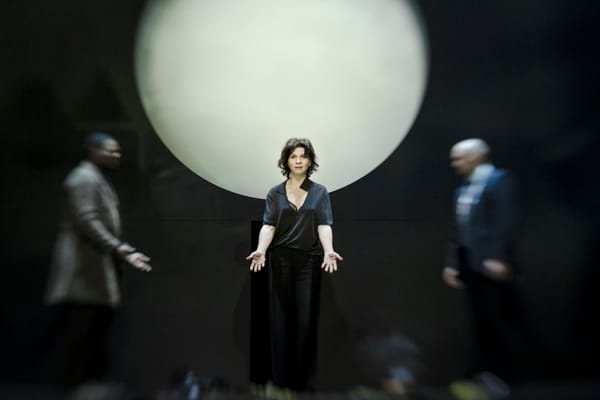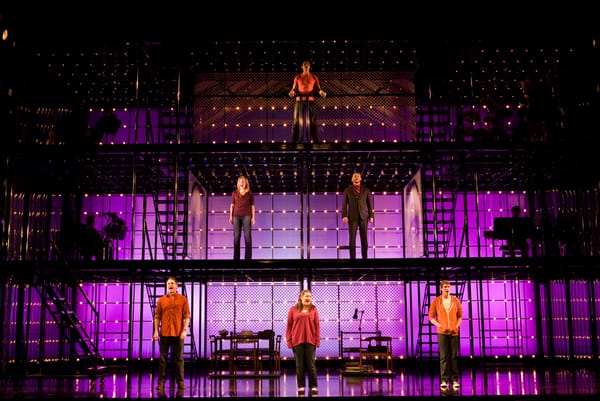Grand Revelations
The Science Museum's latest show of scientific photography is an incredible triumph
Out of all the artistic disciples, it is photography that is the most fundamentally scientific. From the early days of the camera obscura, whose physics has delighted humanity since the Ancient Greeks, to the chemical reactions silver nitrate underwent in creating the first fixed photographic prints, science has always neatly allied itself with photography, with each field informing and shaping the other - a true expression of a symbiotic relationship. Even today, whenever fixing an image on film, there is an experimental quality: the reel goes into its little black tube, unseen, and it’s not until you have gone through the labour of love of developing and printing that you can actually see what you’ve managed to create.
With this in mind, it would be easily to accuse the Science Museum of taking an easy route out with their latest exhibition, Revelations: Experiments in Photography, currently taking root in their new Media Space Gallery. Luckily this is not the case. Rather than simply rehashing the oft-described history of photography, they have - through expert curation - managed to trace a much more interesting story, one that plunges deep into the fundamental nature of photography and science themselves.
From very early on in its history, photography has been used to capture that which the human eye could not clearly see, and this ethos is represented in the first space, which hosts prints of both the macro- and the microscopic. They are astonishing in their detail. Frank Dyson, for example, who was principally an astronomist, managed to capture some of the most beautiful images of a solar eclipse I have ever seen. Created in stark black and white, the detail of the sun’s corona is beautiful and delicate; it is as if someone has blown soot across the image, or merely passed it through a field of smoke, to create a brilliantly moving piece. And Dyson was not alone in turning to the heavens: fellow astronomer Andrew Ainslie Common used a prolonged exposure time to capture the magnificence of the Orion Nebula, in a striking image that preceded the Hubble Telescope by more than a century. The fact that such images still carry weight today is testament to their creators’ strengths as photographers, and one can only imagine their astonishment when their striking designs were developed.
Elsewhere we can see how the two disciplines informed each other: Auguste Adolphe Bertsch’s microscopic photography, for example, in which the structure of tiny flies and miniscule plants was accurately explored. What is even more surprising is the fact that such techniques had little impact on a scientific community that preferred to rely on hand-made drawings to illustrate their texts. Eadweard Muybridge’s experiments with capturing movement is, as you would expect, well represented, along with fellow photographer Etienne-Jules Marey composite photographs of motion, which preceded iconic work in art such as Duchamp’s Nude Descending A Staircase, No. 2, and Giacomo Balla’s Dynamism of a Dog on a Leash. But we are also afforded the chance to go further into Muray’s canon, as we are presented with his studies into air motion, which are as beautiful as they are informative.
The exhibition continues into the 20th Century, as we explore how the dialogue between art and science was cemented. From Harold Eugene Edgerton, that American photography great, whose work is clearly indebted to Clive Banfield’s work on fluid dynamics as well as Muray’s motion studies, to Laszlo Moholy-Nagy, whose idea of a ‘hygiene of the optical’ forms a direct link to Rontgen’s X-ray images. The two different disciples feed off each other, a sentiment echoed by American photographer Berenice Abbott, who said that ‘science needs the warm human quality of the imagination added to its austere and stern discipline’, and whose black and white photographs explore scientific concepts with a minimalist elegance - Abbott treats waveforms and magnetism like haute couture, elevating them to a pinnacle of grace and art.
It is the last room, however, where some of the most interesting work can be found - here the Media Space is taken over by a number of contemporary artists, whose work is simply incredible. Joris Jansen, for example, whose series Kosmos involves taking magnified photographs of old film, until the cracked, technicolour features resemble vast galaxies; he is doing with photographs what composer William Basinski did for sound in his_ Disintegration Loops_. Clare Strand’s work, meanwhile, based on the motion studies conducted by Frank and Lillian Gilbreth, is quietly disconcerting, with the idea of motional efficiency reminding me of Martha Rosler’s video-art. Strand explores the idea of what it means to be efficient within the arts, creating a cultural critique of an industry that seems to value output over quality.
The highlight of the section is Walead Beshty’s series Transparencies, for which the artist took photographic film through an airport scanner, whose beams left ghostly imprints behind. The work is generated randomly, but through the rigorously organised machine that is airport bureaucracy. Beshty’s work asks us to consider the impact that such invasions into our privacy are having, revealing the marks that they leave behind, as if the large prints are not photographs, but instead windows into humanity’s soul.
While all the work in Revelations is fantastic, what the curators have managed to do is draw out an enticing narrative that exists between the two different disciplines. As we move through the exhibition, we can see how the pioneers of yesteryear, luminaries such as Talbot and Daguerre, are still very much relevant to today, not because they laid the foundations for the photographic technique - although this is certainly important - but because it is their adventurous spirit, and enthusiasm for experimentation, that has been passed down to the artists of today. The Science Museum have created an exhibition that lives up to its name, charting a direct line through history, from Muray, to Moholy-Nagy, to postmodernists; all that’s left is to wonder where we go now. The future certainly looks bright.
Revelations in on at The Science Museum until 13th September. Tickets are £8 Adults; £6 Students









